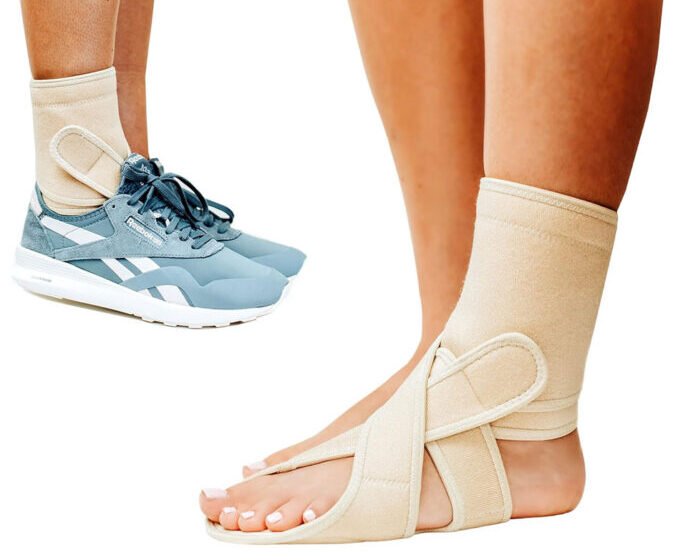Drop Foot Doesn’t Get to Run Your Life: How to Walk Tall Anyway

Drop foot is a clunky little menace. You’re walking fine, and suddenly your toes catch, sending your coffee flying, your pride bruised before your knee even hits the ground. It’s frustrating, unpredictable, and, let’s be honest, a bit humiliating in grocery store aisles. You know what’s worse? Feeling like you’ve lost the ability to stroll across the room without turning it into a potential blooper reel.
You might find yourself scanning curbs like they’re your nemesis or getting into bed like you’re maneuvering a fragile museum piece. The world suddenly feels like it’s sprinkled with landmines, from uneven sidewalks to that area rug your spouse insists “ties the room together.” But here’s the thing: you can still live well with drop foot. It’s about adapting without surrendering every ounce of freedom you have left.
Small Swaps, Big Wins
Some mornings, it’s hard enough to get out of bed, let alone trip your way across the bathroom floor. This is where the right support becomes your unsung hero. A solid brace can help keep your toes from dragging, but it’s worth getting one that fits your life, not just your foot. The clunky dinosaur models from the last century? They don’t have to be your reality.
You’ll also want to rethink your shoes. Regular sneakers might look fine, but you’ll notice they don’t do you many favors when you’re trying to avoid tripping over your own feet. This is the part where orthopedic shoes for women and men step in as a game-changer. They’re not the marshmallow-looking contraptions you’re picturing, either. Think stability without sacrificing dignity, with enough grip and structure to let you walk with a little more confidence instead of wobbling around like a newborn deer.
Fall, Get Up, Repeat
No matter how careful you are, there’s a chance you’re going to hit the ground now and then. It happens. The fear of falling can mess with your head, making you hesitant to leave the house, which can steal your independence faster than the drop foot itself. But learning how to fall safely and, more importantly, how to get back up can help you feel less like your world is shrinking every time you step outside.
If you’re scared of hitting the pavement, practice on a soft surface first. Roll if you can, protect your head, and breathe. Then, when it’s safe, focus on getting up from a fall. Use sturdy furniture, take your time, and don’t panic. It’s not a graceful process, but it’s one of those life skills that becomes second nature. The more you practice, the less scary falling feels, and that’s half the battle.
Staying Active Without Burning Out
You need to keep your body moving, but not in a way that makes you feel like a circus clown auditioning for pratfalls. Walking pools, using a stationary bike, or gentle yoga can help you keep your muscles strong without putting your safety on the chopping block. Your leg and foot muscles need conditioning to stay functional, and moving your body helps your brain recalibrate to the limitations of your foot drop.
It’s not about training for a marathon. It’s about staying steady and giving yourself enough strength to maneuver around your life’s daily obstacles. You’ll notice that with even small doses of movement, your mood and energy levels don’t tank as fast, which is its own kind of victory when your nerves are already on edge.
Mindset Matters, Even If It’s Annoying
Nobody likes being told to “stay positive” when they’re dealing with a condition that can flip their day upside down with one stumble. But let’s call it what it is: your mindset will make or break how drop foot fits into your life.
It’s easy to spiral into frustration or let the fear of tripping keep you on the couch. You’re not alone if you’ve found yourself avoiding outings or skipping social gatherings because the thought of falling in public feels unbearable. Give yourself permission to be annoyed by it, but don’t let it call the shots long-term. Celebrate the days you get through without a stumble, but don’t tear yourself down on the days you don’t.
Find people who get it, whether it’s a support group, a friend with a similar experience, or a physical therapist who treats you like a human instead of a chart in a folder. This will keep your mental game steady while you navigate the physical challenges.
Final Thoughts
Living with drop foot will never be the plot twist you asked for. It’s inconvenient, often embarrassing, and sometimes just plain exhausting. But it doesn’t get to run your life. You do.
Your best move is to work with what you’ve got, get the tools that actually help, and keep living as fully as you can. There’s dignity in learning to navigate your condition with some humor and a clear-eyed view of reality, instead of letting it box you in. You’re allowed to have days where it all feels like a bit too much, and you’re allowed to have days where you laugh because your brace just squeaked across the floor like a cartoon, and you find it funny instead of frustrating.
Keep moving. Keep laughing when you can. And keep reminding yourself you’re not defined by the way your foot hits the ground. You’re still you, and you still get to live on your terms.





